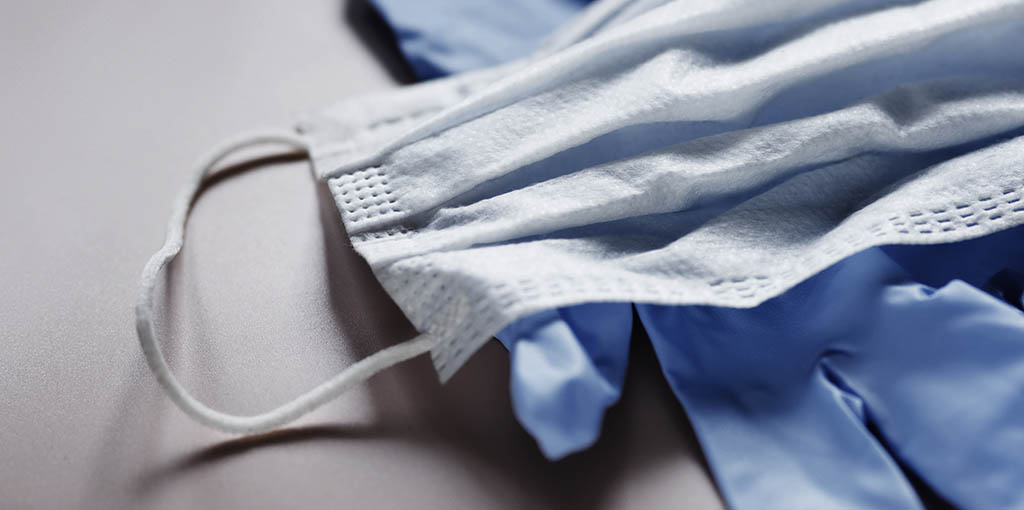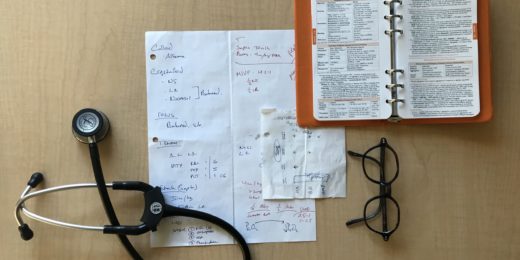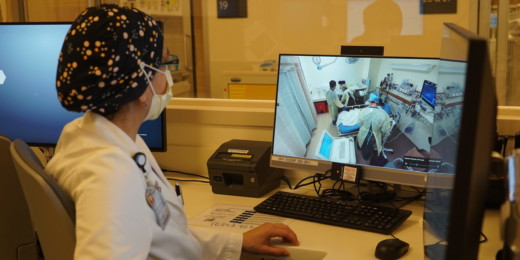When the coronavirus pandemic reached Santa Clara County -- one of the first U.S. counties with positive cases -- Stanford Medicine medical residents like Gabriela Spencer, MD, were on the front lines. Spencer, who was working the night Stanford Hospital received its first COVID-19-positive test result for a patient, recalls a flurry of texts with her fellow residents in internal medicine as they strategized the next steps.
"There were a lot of mixed emotions," Spencer said. "We had been expecting this, we were as ready as we could be, but immediately there were a lot of questions -- and a lot of fear. How contagious was the virus? Would the personal protective equipment keep us safe? What risk would our contact with patients pose to our family members at home?"
At academic medical institutions residents are an essential part of patient care. Under the supervision of senior residents or medical fellows, residents examine, diagnose, treat, perform medical procedures and communicate with patients, family members and other members of the medical team. It's a three- to seven-year period of long work hours, intense focus and ongoing learning in the best of times.
During the months of the COVID-19 pandemic, when protocols for care and safety were evolving each day as more was learned about the virus, it became a trial by fire as residents scrambled to help in any way possible.
Neera Ahuja, MD, division chief of hospital medicine and former associate director for the internal medicine residency program, was responsible for staffing the surge teams necessary to accommodate expected increases in patient load on the medical wards. At first, the task of caring for COVID-19-positive patients fell mainly on residents in internal medicine and, if the patients were gravely ill, intensive care. But as the weeks and months went on, residents from other specialties were called on to help.
"At first, we staffed with residents from internal medicine," said Ahuja, "while the ICU partnered with physicians from anesthesia and emergency medicine to care for patients who needed to be sedated while on a ventilator." But by December, when the Bay Area was seeing its worse surge, we knew we had to reach out to other departments to handle this."
No one hesitated to step in
Residents and specialists from orthopedics, otolaryngology and even radiology stepped up to help. "It's really representative of what Stanford is all about that most people and departments didn't hesitate."
Shaunak Adkar, MD, a second-year vascular surgery resident, spent nights for a week in the COVID-19-dedicated ICU.
"It was a very eye-opening experience for me," said Adkar. "I had cared for COVID-positive patients before, but these were severe, with respiratory failure beyond what I had seen before. I was able to observe different options and techniques to manage these patients and it was rewarding to see many get better over that week."
Not every patient recovered quickly, however, or in some cases at all.
"What stood out to me among the patients in general was that, although the majority were older, there were also much younger patients in the ICU," Adkar said. "It was surprising to see people in their 30s and 40s who were not recovering very fast. Some appeared to improve but then ended up back in the ICU with worsening respiratory issues."
Many of those patients were exposed to the virus as a result of socioeconomic pressures -- often because they were essential workers who couldn't avoid ongoing contact with the public, said Achyut Patil, MD, a third-year resident in internal medicine who spent several weeks in the COVID-19 ICU.
"It was a real gut punch to me to see firsthand how disadvantaged people and minorities have been disproportionally affected by this virus," said Patil. "I felt it was really important for me to be there with them and, when necessary, to participate in end-of-life decisions with the family members to be certain we did the absolute best we could for those patients."
As the pandemic continued and hospital visitors were restricted, residents became crucial intermediaries between patients and families.
"It sometimes took a few hours just to make calls to the families, keeping them up-to-date in a very distressing situation," said Spencer. "I'm from Puerto Rico, and a lot of my patients were Spanish-speaking. It's really important for me to be able to have these sometimes charged and difficult conversations with their family members in their native language."
"A lot of residents of color felt a huge responsibility to serve our community," Spencer said. "We had discussions about how we needed to be present to help those people who were the most vulnerable, who were the least likely to have ways to protect themselves from the virus."
Learning 'outside their comfort zones'
As they struggled to provide the best care for patients, residents like Spencer, Patil and Adkar faced another challenge -- that of maintaining the educational component of a traditional residency in the face of a very non-traditional situation.
"Medical residency is a notoriously demanding part of medical training, and dealing with the pandemic over the past year made an already challenging period of our lives that much more intense," Patil said.
After it became clear that the protocols and personal protective equipment prevented infection of medical workers, the graduate medical educational community came together in a show of solidarity to relieve some of their fellow residents and allow them to pursue other aspects of their training.
"There were residents from radiology, otolaryngology and pediatrics who volunteered to staff the surge teams," Spencer said. "They were out of their comfort zones, but there was an overall sense of responsibility to contribute to one of the greatest health care challenges of our generation."
Many residents have found that the physical separation and protective equipment necessary to keep medical teams and other patients safe from infection was a stumbling block to the kinds of interaction that they valued most.
"Speaking with and having personal time with patients is what makes someone an amazing doctor," Spencer said. "But we can't always do that anymore. So we're having conversations about how can we continue to be human, to develop a relationship with a patient from a distance."
"We've been learning in real time," said Jeffrey Chi, MD, a clinical associate professor of medicine who helped manage staffing and workflow during the pandemic. "Everyone recognizes that this is a unique situation, a one-time call to duty. So many people have been willing to step up during the past year in areas outside their normal scope of practice. That's part of what draws people to medical practice. We're all in it to help people."
"In the end," said Patil, "that is our job, that's why we're here. What is the point of being a resident if we're not going to care for our patients?"
Image by Kat Ka






